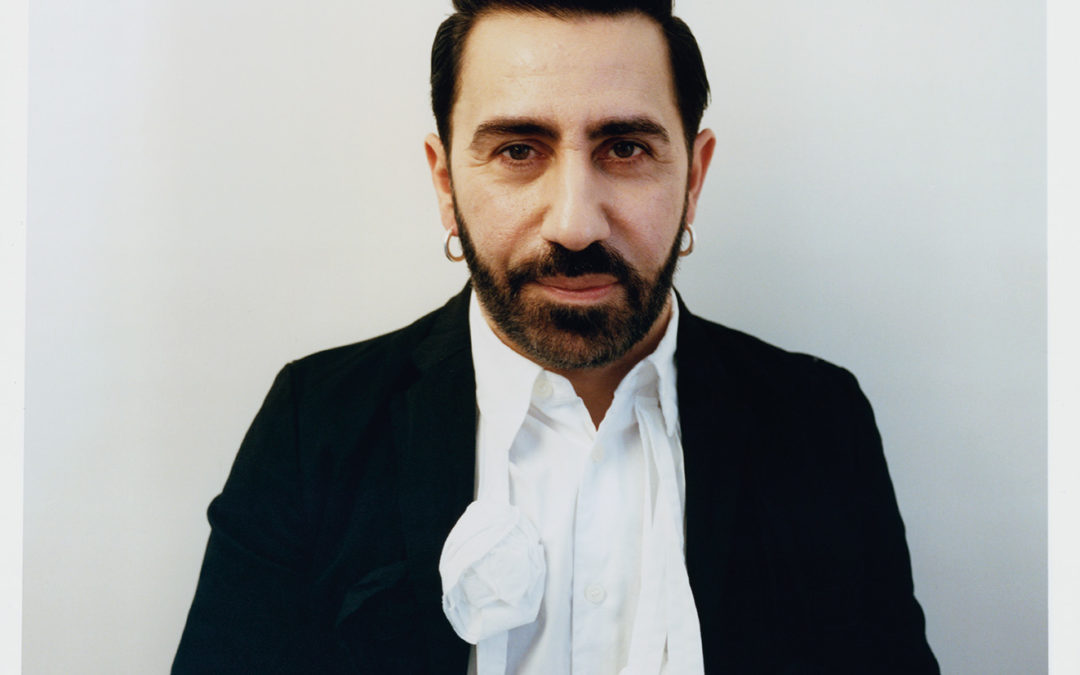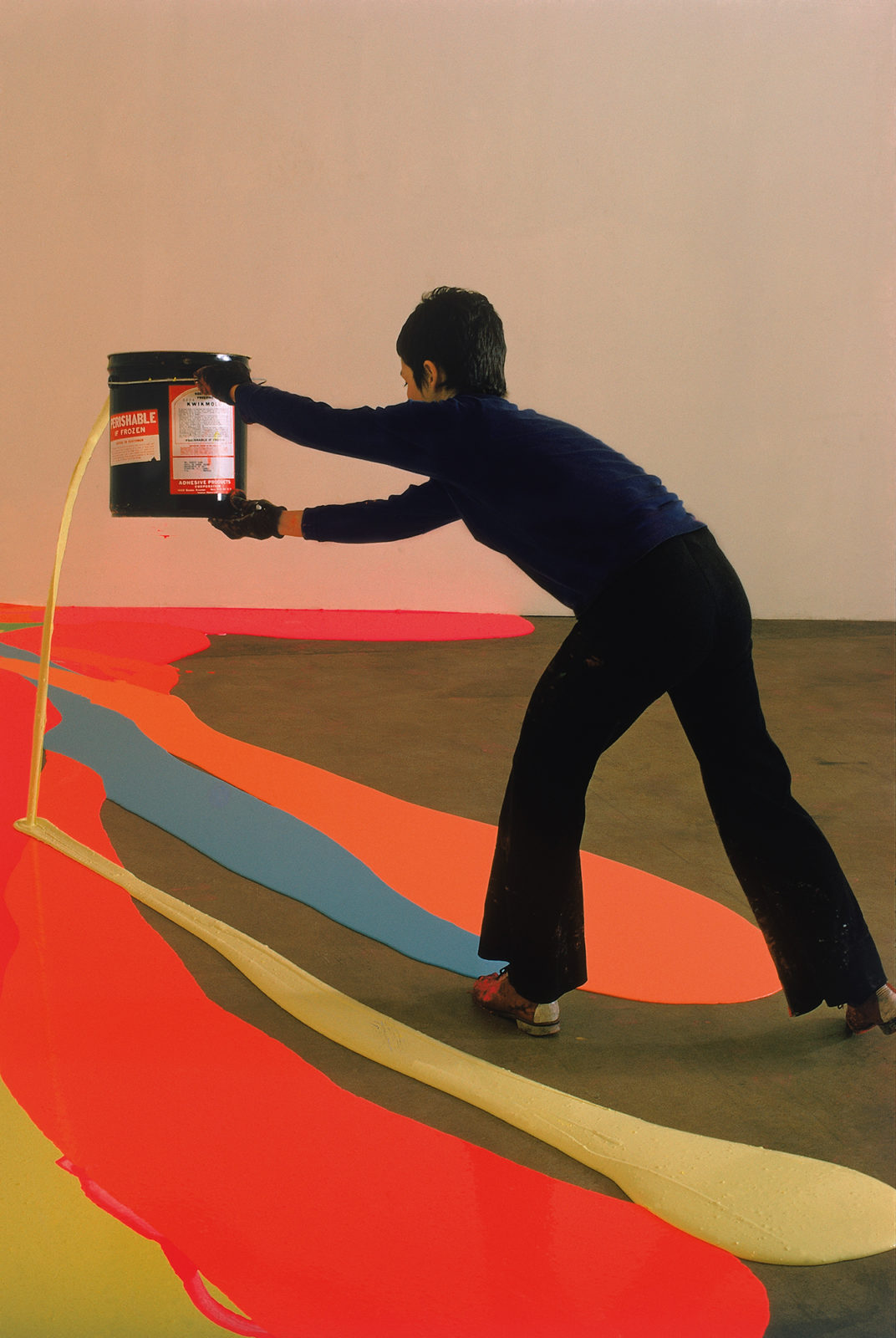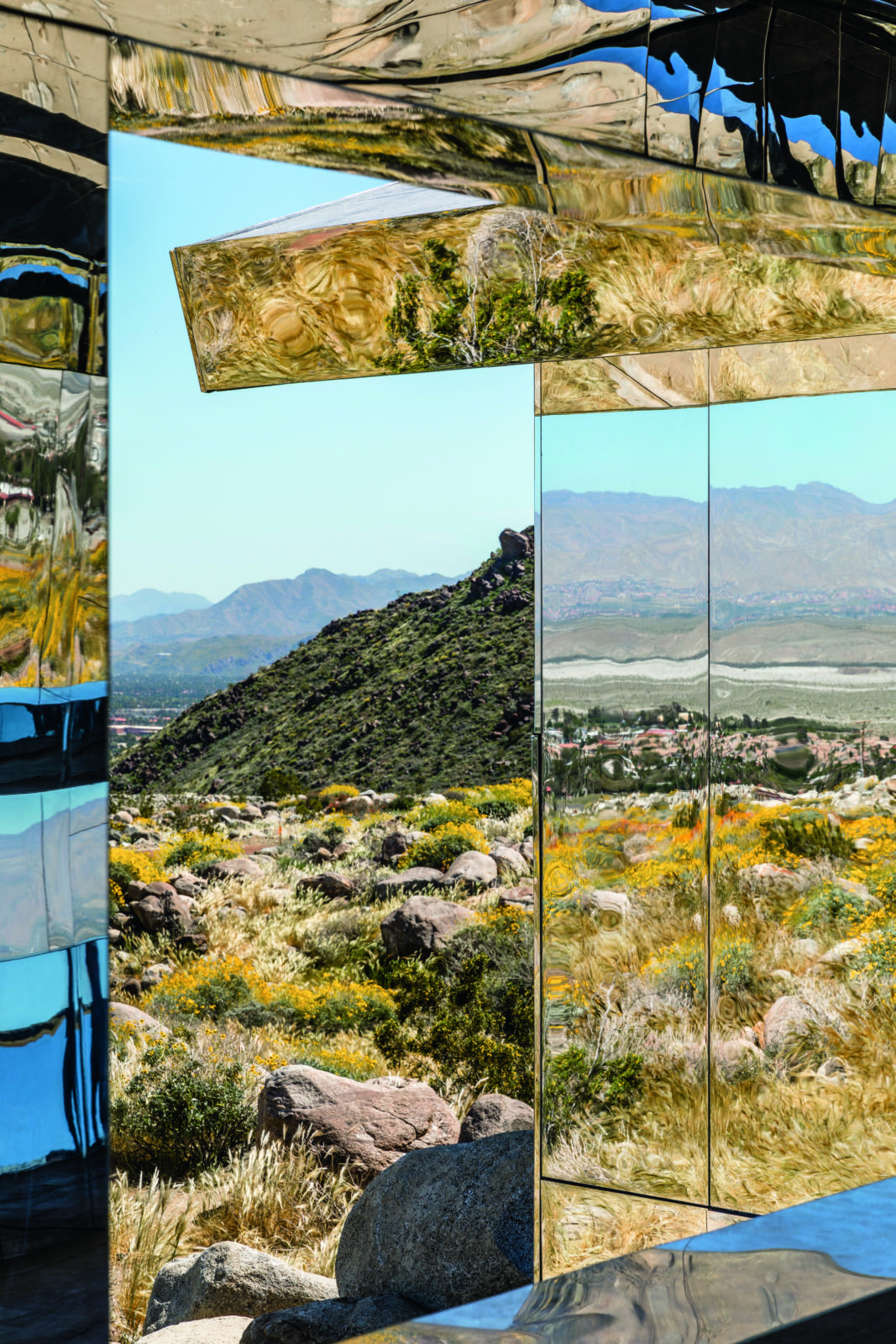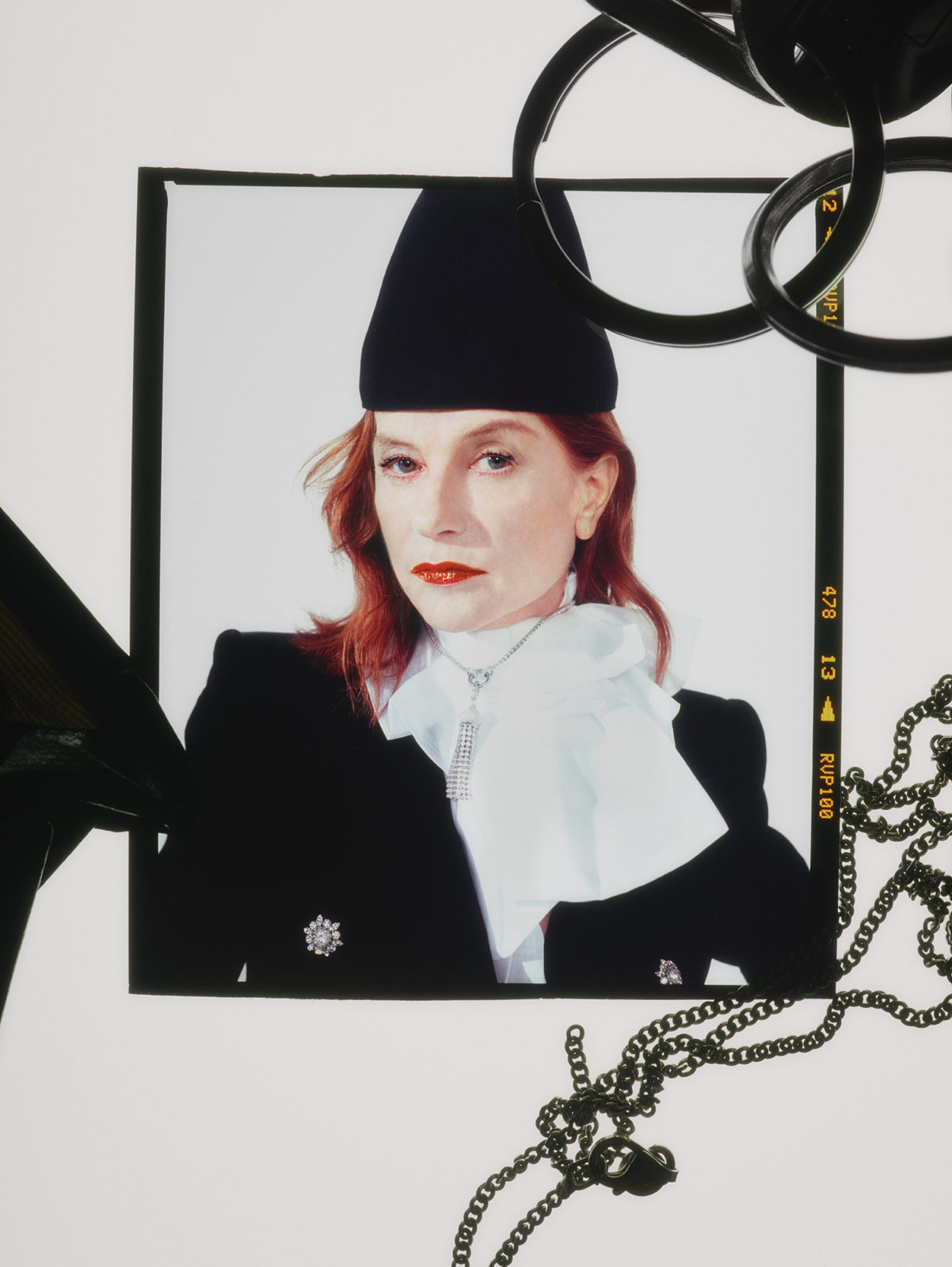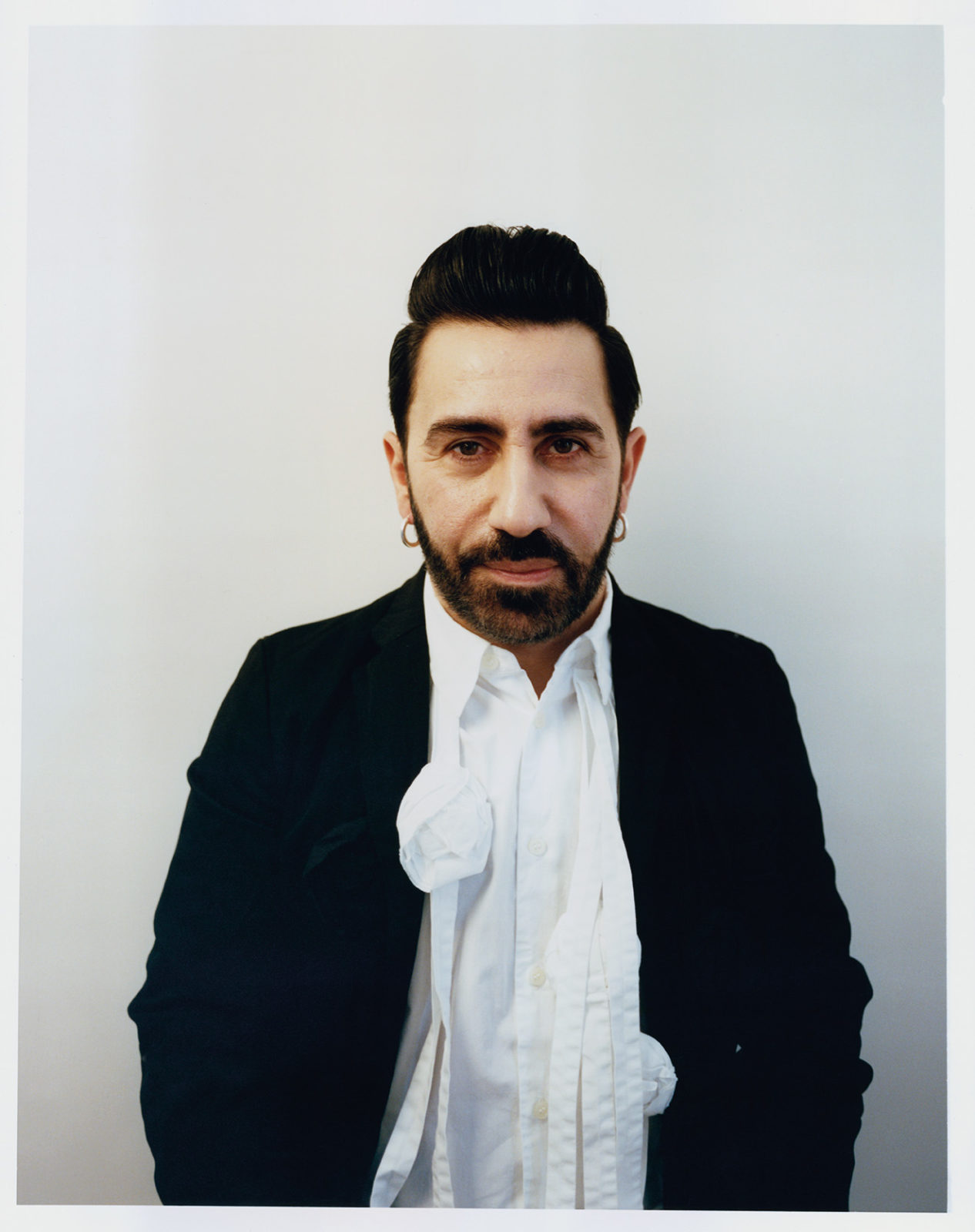
Photographed by Karen Paulina Biswell
A MEETING BETWEEN JOHNNY COCA & ARMELLE LETURCQ
By Armelle Leturcq
Johnny Coca has just been appointed Women’s Fashion Leather Goods Director at Louis Vuitton. A nice occasion to rediscover our interview with him from 2018.
Preferring to keep a low profile, Johnny Coca worked behind the scenes for many years, first in leather goods at Louis Vuitton and then at Céline, where he supervised the accessory lines. That’s where he worked alongside Michael Kors and first met Phoebe Philo. A master designer of innovative accessories with visionary forms, Coca is the genius behind Céline’s most coveted bags which now serve as icons of the brand. In 2014 he was appointed as creative director of Mulberry, an important stepping stone that has given him a comprehensive perspective on every aspect of running a fashion house, from silhouettes to store concepts.
Can you tell us about your background?
My background started in Sevilla, then continued in France where I completed my studies. I’m passionate about fashion. I went to an applied arts school near Bordeaux, then I moved up to Paris, then to Brest for two years to study at an automotive and aeronautics school. I loved cars. Then I went to École Boulle, though I was enrolled at an architecture school. It was nothing but furniture and product design, which I really enjoyed even though I’ve always loved fashion. Fashion felt like a place for privileged people to me, and since I was from the south of Spain, I never thought I would find a way in without any connections. I loved drawing. At six years old, I already started drawing nudes and I continued when I got to Paris. I was bored at school. When I was twenty-two I was attending two different schools at once and I was working at an architecture firm. Then I started working on storefront concepts for Louis Vuitton, that was in 1996, I believe. At that time, I started redrawing all the bags in the catalog for the storefronts. Since I loved fashion, it was natural for me to draw leather goods, and then one day I realized I wanted to make it my job. That’s when I met Yves Carcelle and showed him my work. A month later, without even finishing school, I got a proper job at Vuitton and stayed there for almost five years. I spent my life in the leather studios to understand construction, volume, and materials. I spent my time drawing, sometimes until three in the morning. I plastered all the walls in my house and office with drawings. Eventually I told them I was leaving, and I ended up as head of accessories at Céline when Michael Kors was still in charge. I stayed there for five years. I had a team of nearly twenty-five people, it was huge. I was so young and it was strange to have so many responsibilities. Looking back, it was hugely rewarding to develop all the accessory categories. It helped me learn all the concepts and techniques. When Michael Kors left, I didn’t know who would take his place, so I preferred to quit. I decided to take a tour of Italy, I felt it was the right time. Then I worked at Bally for four years. The company was part of an investment fund and their goal was to sell. It was a fun exercise for me. How could we boost sales? They sold the company for a staggering amount and for me, my work was done, I didn’t want to stay any longer. Then LVMH called me and asked me to work for Céline but I told them I had already done that for five years. (laughs) I eventually met Phoebe and thought she was incredible. We talked for hours and we realized we wanted the same things. I wanted a lot of freedom in terms of the product and not to have any constraints with strong codes. When Phoebe came on, all the codes vanished. Everything I wanted to draw was what she wanted to see, so it seemed like the perfect collaboration. So then I was in charge of all the accessory categories. I stayed there for over five and a half years. What interested me was to rethink things in a different way, to think about how to approach product development with a much more personal and radical vision. It was important not to follow, but instead to bring something totally different on a creative level. What can I do that hasn’t been done before and how can I approach function, while trying to work on construction, materials, volumes, and colors? My background was in design and architecture, so I naturally thought in terms of construction. I tried not to pay attention to what people expected form me, and to only think of a construction that would define a silhouette and an attitude. I was a huge fan of sunglasses, I collected them for a long time. It was interesting to see how I could rethink the proportions of sunglasses. You have a particular attitude when you wear them, and it’s all tied to the incline. I inclined them more towards the interior, I worked on the polish, I launched extremely flat lenses.
What is your starting point when designing?
When I’m working on a product, I start with the proportions, which leads me to the construction. For bags, you can use the same design in a dozen different ways, and that will completely change the construction. It’s also important to work on the silhouette. The starting point remains the question: what function do I need? Cabas, hobo, or bucket bag? Then it’s all a matter of finding the item’s identity. Aside from that, I draw, I love it. Always with very architectural lines, just like if I was designing a chair. I’m a maniac when it comes to perspective, I can’t stand people who forget about it. It drives me crazy. I spend so much time correcting everyone’s drawings! (laughs)
Do you use 3D?
Yes, we always use 3D for the model. I know exactly what I want in terms of lines and then I send the drawings to my designers who put it into proper form. Then we send it all to the studios where they start working on the volumes. In general I have them do the same design with two or three different constructions. It can totally change the look. The goal is to rethink functionality.
Do you work on garments in the same way as accessories?
Yes, I always work on the garment’s construction, its silhouette. One thing is that I work more often in 3D than 2D. I need to see the garment’s volumes.
Is this your first time working in ready-to-wear?
Yes, but I went to all the fittings with Phoebe. It was fairly simple with Mulberry, because after working on every aspect of the accessory, what was missing was the silhouette. I drew a lot of things resting against a silhouette. What’s interesting about that is that I can define my silhouette and introduce the accessories afterwards. At the end of the day, it’s always a balance between which element is most present. Will I accent the silhouette or the accessory? Accessorizing brings a silhouette together and makes it distinct. In my Spring/Summer 2018 collection with all the hats, the silhouette is unique but the accessory changes everything. The hats give the girls a strong ceremonial appearance. And when you remove the hat, the silhouette falls to pieces. I try to mix classics with unconventional items, just to break all the codes. That’s my main purpose at Mulberry. I want to bring in something different while maintaining an English identity, staying true to what England represents for its people and foreigners. Those are two totally different aspects. The English have such a vast culture, both in terms of music and art. Then there is the English countryside which is something completely different. As soon as you arrive at St. Pancras station, the Saint Martins School where I teach is just behind you. There are punks on one side and everyone going to the City on the other. There is a strong mix of cultures, but also a mix of professions. In France, the codes are much more ingrained and different in each neighborhood. Whenever I move somewhere, I love sitting on the café terraces and peoplewatching. It’s funny how each neighborhood has its own type of accessories that people wear. When they go buy groceries on Sunday morning, Parisians think they aren’t well-dressed but they’re wearing their nice tennis shoes with a nice coat. It’s totally different in London, where everyone tries to be extremely different.
So England is the starting point for Mulberry in your eyes?
Yes. When I see how many fashion houses draw inspiration from English culture and its codes, I know that we have that credibility as an English brand. We don’t need to go searching in India or Mexico, even though it’s interesting to mix things up. I think I’ll do that next season. (laughs) For now I’m staying very English, but in the future I’m going to blend the different countries. I think it will be fun. When I did a collection with “college stripes,” I had been seeing all these kids in the street with their uniforms. I didn’t understand why they all had a different uniform, and then I learned that each school had its own. So I decided to mix the codes. Last winter, everything was very inspired by the equestrian world and the flowers of the English countryside. I visited houses in Somerset and a few were totally covered in flowers, from top to bottom. It’s so unique that it becomes interesting, it’s like a Liberty print. The English are fascinated by gardens. They have special days devoted to them. And then everything revolves around the queen and family values. They are extremely conservative. When I first arrived at Mulberry, I noticed every desk had a wide tea selection, I was stunned. (laughs) I was so inspired by what Vivienne Westwood and then McQueen were doing at the time, that spirit of rebellion taken to the extreme. I was inspired by how they analyzed the political, sociological, and cultural universe of their country. I had a lot of fun with that. It was extremely classic before I got there. They had a much more “girly” way of approaching everything. I think I brought in a more offbeat aspect. That’s also why I chose Lotta Volkova for styling
What is it like for you to be a creative director? You kept a lower profile in your previous positions.
I always wanted to be a creative director, but I didn’t want to put too much pressure on myself. My title is not what’s most important for me, I absolutely do not have a huge ego. I was happy working on boutique concepts because I like architecture, I was happy with communications because I like photography, art, and images. I like working on all the different aspects of a product, everything that will enhance or present the design in a different way. Having a global vision of things is much easier than working on a single category. I like working on a product’s presentation. What I like about galleries is that there is no concept of price, all the attention is focused on the object: how can you maximize its importance within a given space. We’re not trying to show off. We’re currently working on a new concept to better showcase our accessories by rethinking their environment. Being an artistic director means having a 360° vision of everything we want to convey in terms of our message. It takes time because we’re not part of a corporate group, so we have fewer resources. We’re also working out how to take a very national brand and make it more international. In my view, we will have lived up to our challenge when we can expand the brand internationally.
Did the fashion house assign any particular challenge to you when you arrived?
I think the strategy was to boost the brand’s international visibility, not to focus solely on English clientele. I had to bring something different, desirable, and above all create a more perceptible identity. People had heard of Mulberry bags, but they had trouble getting a clear image.
What are your biggest inspirations?
My biggest inspiration is the street, I love watching people. I like watching how women dress and imagining how I can change them, “improve” them. (laughs) The street gives me references and details. I could never live in just one country, I have to move around. Right now I’m living between Paris and London, with an attachment to Spain. Obviously I go to exhibitions, I visit galleries, I love bargain-hunting at the Saint-Ouen flea market. That’s all for fun. It might impact my designs, but it’s mostly personal.
Do you see digital as a constraint? Did it change the way you work?
Honestly I think it’s a constraint. Nowadays, digital is placing obligations on people. You have to post on Instagram, update your status on Facebook. But I think there are positives, too. People without access to art, photography, or fashion now have the ability to learn about it. But on the whole, everything digital has become too commercial. Brands post things so they can sell, not to translate their direction into images. I would like to work on that for the next seasons, that’s my goal. Everyone says it’s like a storefront, but it’s not interesting if it’s just about selling. When it comes to press, nothing beats paper in my opinion. When I tell people that, they stare at me in wide-eyed disbelief. The new generation swears only by digital. I never look at photos on a phone, I prefer to buy an actual paper copy. For me, a magazine is part of a collection. If I buy a magazine and a corner gets bent, it drives me crazy, just like with a book. There is a lot of work that goes into it. It’s a process. It’s hard for me to imagine people throwing away magazines. It bothers me. I remember when I used to buy Visionaire, the box sets were gorgeous! It’s not the same today, in fact there is no comparison. To go back to digital, we don’t have much choice today, but you have to stay aware and use it in a smart way. The young generation is fixated on digital applications, I understand.
How do you see the Mulberry woman?
She’s a classic woman with a slightly offbeat side, who tries to break with the codes. She’s self-assured, has character, and a personal sense of what is “beautiful.” She likes well-made things. Another thing to add is that it’s not just one woman, I prefer to think comprehensively. Women in the street are all different, both in terms of their look and their accessories.
This year marks twenty years of Crash and fifty years since May 1968. What does revolution mean to you?
For me revolution means moving on to something else, to a new era. It means breaking the codes and showing that if we want to evolve, we need to make a break, which is the revolution. The interesting thing about 1968 was the force and the power to say what you think out loud and to stand by your convictions. I think it’s good to see all the feminism today, and all the political scandals breaking out. Things need to get out into the open. That said, I’m against violence, there are other ways to get your message across. You can’t build a revolution on your own, numbers are what give you power and enable you to convey messages, demands, or attention.
Do you think a revolution similar to May 1968 could happen today?
Yes, definitely. Sometimes I would like to see that. I would like all the people who complain every day to get together and work on roundtables and create groups. It’s about sending messages and not grumbling all alone in your corner. If we don’t take to the streets, then we certainly won’t make any progress. We all need support. We could find a balance to strengthen and develop things, even in France. Everyone complains about things being made abroad, but if they want to develop “Made in France,” then they need to get smart about it. It’s important to preserve all our French crafts and expertise. It’s sad to see certain techniques vanishing, all because of money. I’m glad to see people protesting when they try to shut down factories. Globalization is one thing, but you also have to preserve the culture and all the craftsmanship in each country. If we just wanted to make money at Mulberry, we wouldn’t have two factories employing six hundred people each, because it costs a lot more to manufacture in England. We produce some things abroad, but most of our production is done in our factories.







